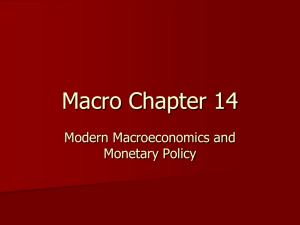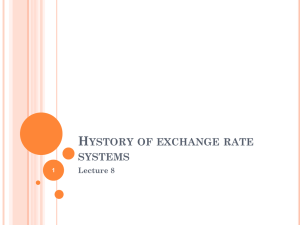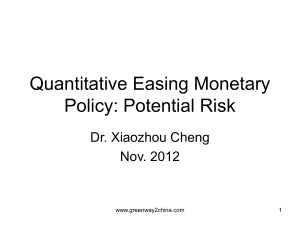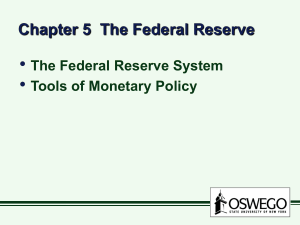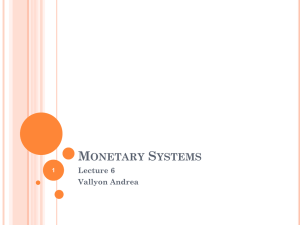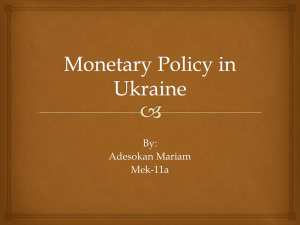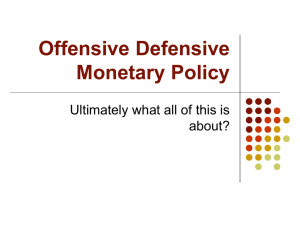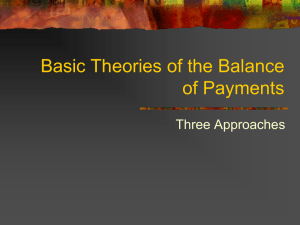International Finance - Leeds School of Business
advertisement
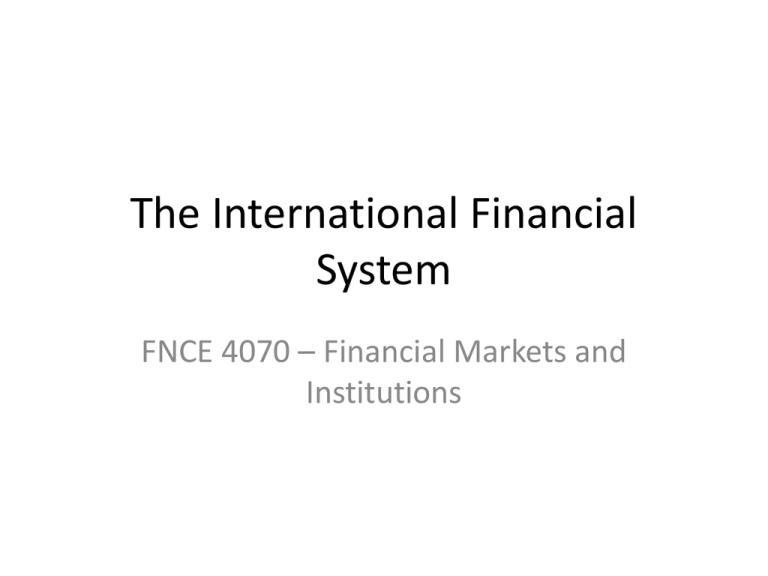
The International Financial System FNCE 4070 – Financial Markets and Institutions Intervention in the Foreign Exchange Market: the Money Supply • The first step is to understand the impact on the monetary base and the money supply when a central bank intervenes in the foreign exchange market. • International reserves refers to a central bank’s holdings in a foreign currency. Unsterilized Foreign Exchange Intervention • An unsterilized foreign exchange intervention describes when a central bank buys/sells foreign assets in exchange for US currency without correcting for the effect on the monetary base. Unsterilized Intervention in the Foreign Exchange Market Suppose the Fed buys $1bn in bunds Before: After Unsterilized Intervention in the Foreign Exchange Market • A central bank’s sale of domestic currency and corresponding purchase of a foreign assets leads to an equal increase in its international reserves and the monetary base. Effect of an Unsterilized Intervention • The Fed is selling USD and buying EUR. This should weaken the dollar. • The Fed is increasing the monetary base and the money supply. An increase in the money supply should weaken the dollar. • As an open market operation the Fed is increasing the supply of currency or reserves. This should lower the Fed Funds rate which should lower other rates and thus weaken the dollar. Problems with Unsterilized Interventions • The problem with an unsterilized intervention is that the central bank is both affecting the exchange rate but also affecting domestic monetary policy. Sterilized Foreign Exchange Intervention • An sterilized foreign exchange intervention describes when a central bank buys/sells foreign assets in exchange for US currency and corrects for the effect on the monetary base Sterilized Intervention in the Foreign Exchange Market Suppose in addition to the previous unsterilized intervention the Fed also sold $1bn of T-Bills. Before: After Effect of a Sterilized Intervention • The effect of a sterilized intervention is less clear. – The Fed is selling USD and buying EUR so it should weaken the US dollar but • The supply of US vs European assets does not particularly change. – The NY stock exchange is worth approx $14tr – Global Bond Markets are worth approx $82tr – The Monetary Base is approximately $2.5tr Effect of a Sterilized Intervention – The Fed is selling USD and buying EUR so it should weaken the US dollar but • The general supply of US vs European assets does not change. – The NY stock exchange is worth approx $14tr – Global Bond Markets are worth approx $82tr – The Monetary Base is approximately $2.5tr • The monetary base does not change • The Fed Funds rate does not change Effect of a Sterilized Intervention • There is not guaranteed to be an effect on the currency – Portfolio Balance Channel (weak) • The intervention causes a shift in the relative weights of domestic vs foreign assets for an average portfolio – Signaling Channel (stronger) • The intervention causes a shift in the market perception of the central bank’s policy Balance of Payments • The balance of payments is a bookkeeping system for recording all receipts and payments that have a direct bearing on the movement of funds between a nation (private and government) and foreign countries. The Current Account • The current account – These are international transactions that involve currently produced goods and services. The current account includes data on: – Imports and exports of goods – (the trade balance -$378bn in 2009) – Imports and exports of services – financial, legal, medical etc (132bn in 2009) – Income on financial assets (+121bn in 2009) – Transfers between countries. Foreign aid, remittances, international gifts etc (-125bn in 2009) • Thus the current account showed a deficit of -250bn in 2009. The Capital Account • The Capital Account – This includes: – Foreign direct investment – for example the purchase or development of a Toyota plant in the US – Investment in business, real estate, stocks and bonds (these are often put in what is called the Financial Account) – Other financial transactions – for example, cross border bank accounts. • In 2009 the capital account was $140m. Thus 140m more capital flowed into the United States then flowed out. Official Reserve Transaction Account • The sum of the current account and the capital account is the official reserve transaction balance (net change in government international reserves). • In 2009 the official reserve transactions balance was -250bn+140m = -$249.86bn Current Account Deficit • if it is financed by the capital account then a country is foregoing capital assets for goods and services. • If it is financed by borrowing money from abroad then it can show up through the official reserve transaction account


